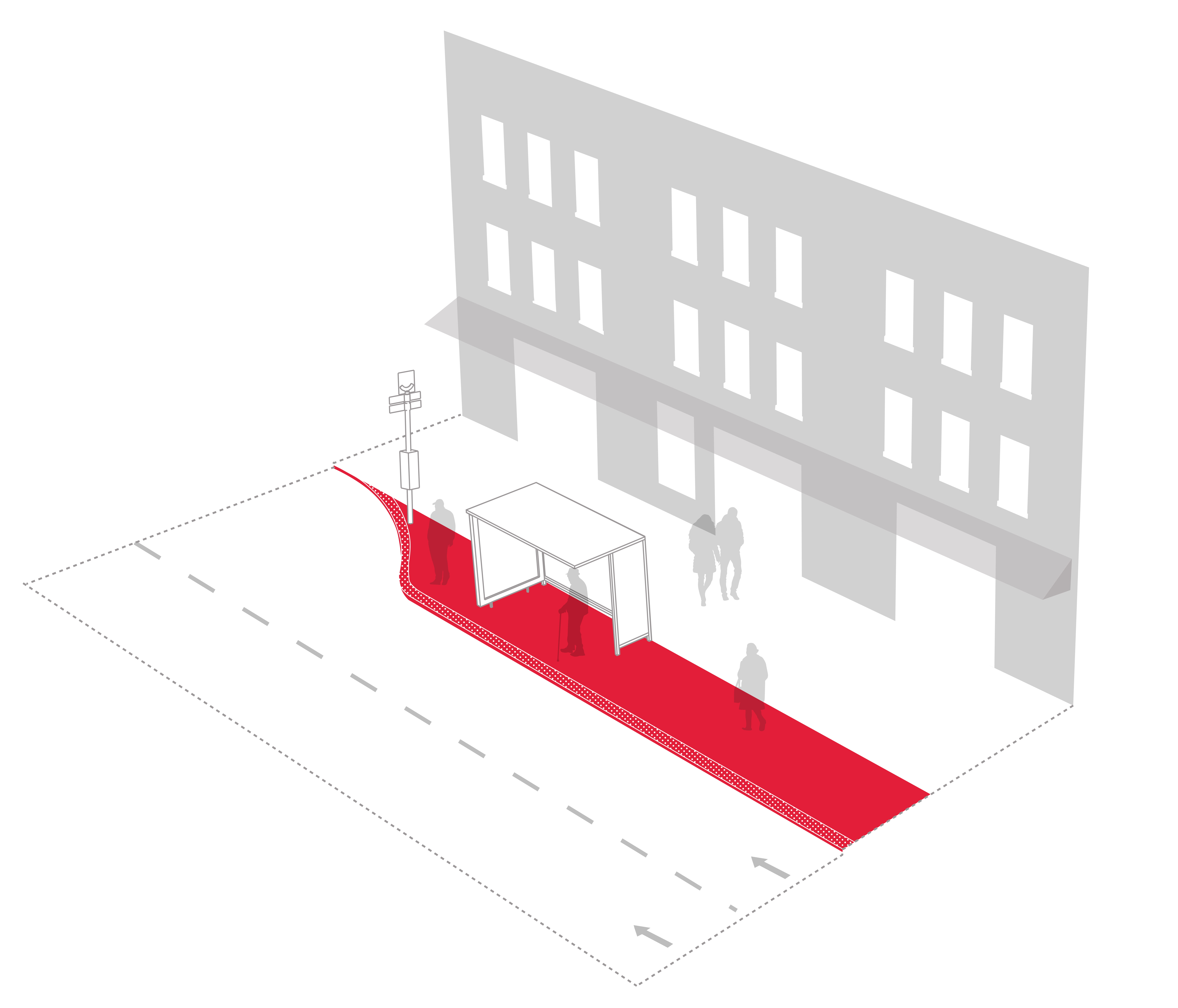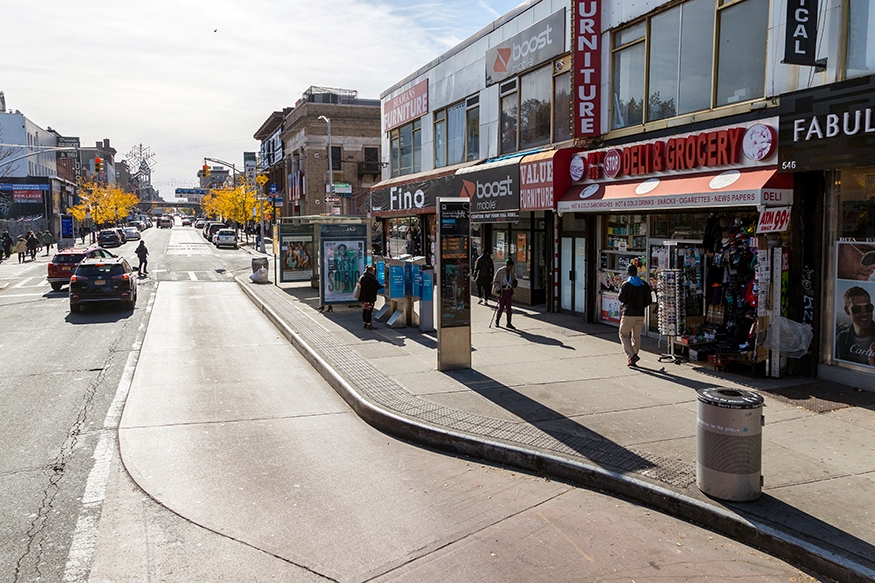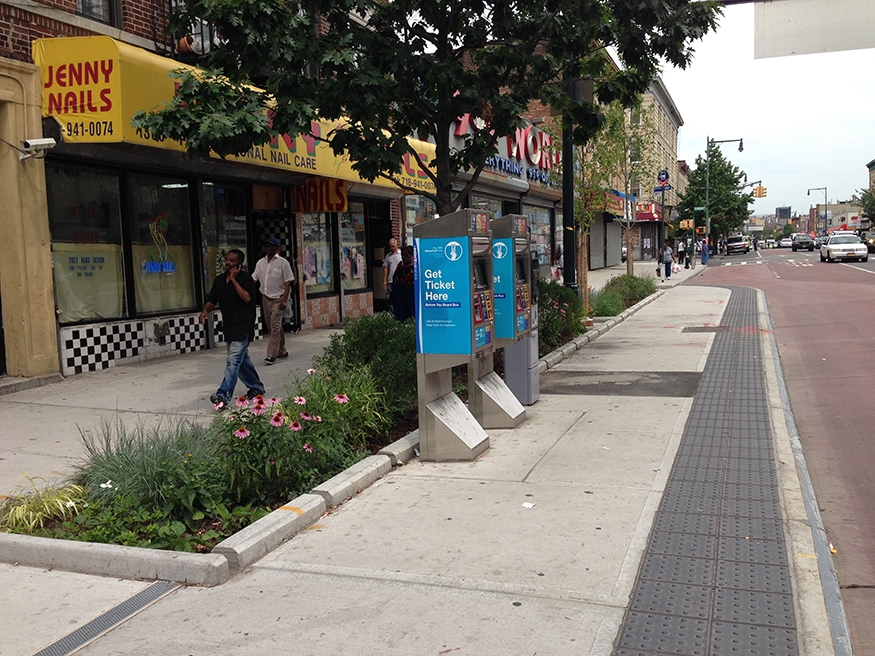Usage: Wide
A curb extension at a bus stop that allows buses to remain in the moving lane while picking up and discharging passengers. Bus bulbs may also be designed to better support bus passengers through the inclusion of higher curbs, bus stop shelters, seating, pre-boarding payment equipment, and other bus-supportive facilities.


Nostrand Avenue and Fulton Street, Brooklyn

Nostrand Avenue and Clarkson Avenue, Brooklyn
Benefits
See benefits of Curb Extension
- Speeds bus movement on streets with traffic congestion by eliminating the need for buses to maneuver in and out of the moving lane
- Speeds bus movement by reducing the likelihood of bus stops being blocked by other vehicles
- Can allow faster bus passenger boarding
- Can provide comfort and convenience to bus riders through dedicated waiting space and inclusion of bus-related amenities
- When utilized at a bus stop under an elevated train line, where the bus does not pull over to the sidewalk and passengers regularly stand in the roadway, provides a safer waiting space
Application
See application guidance for Curb Extension
- At bus stops along bus routes where it has been determined by DOT and MTA NYCT that bus bulbs improve bus service
Design
See design guidance for Curb Extension
For detailed design guidance, see Select Bus Service Design Guidelines: Update (DOT & MTA NYCT, 2018)
- Bus bulbs should be long enough to encompass the front and rear doors of the buses that will be using it, and should extend the length of the bus stop whenever possible
- Design bus bulbs with care to accommodate accessibility needs, taking into account the full range of buses that might be using the stop
- Bus bulbs that are not at sidewalk grade must be accessible via ramp with a maximum cross-slope of 2%
- To achieve near level boarding, bus bulbs may have a higher curb-reveal, up to 10.5 inches
- While bus bulbs are typically constructed in concrete, it is possible to use operational materials which can be implemented more quickly and at lower cost


